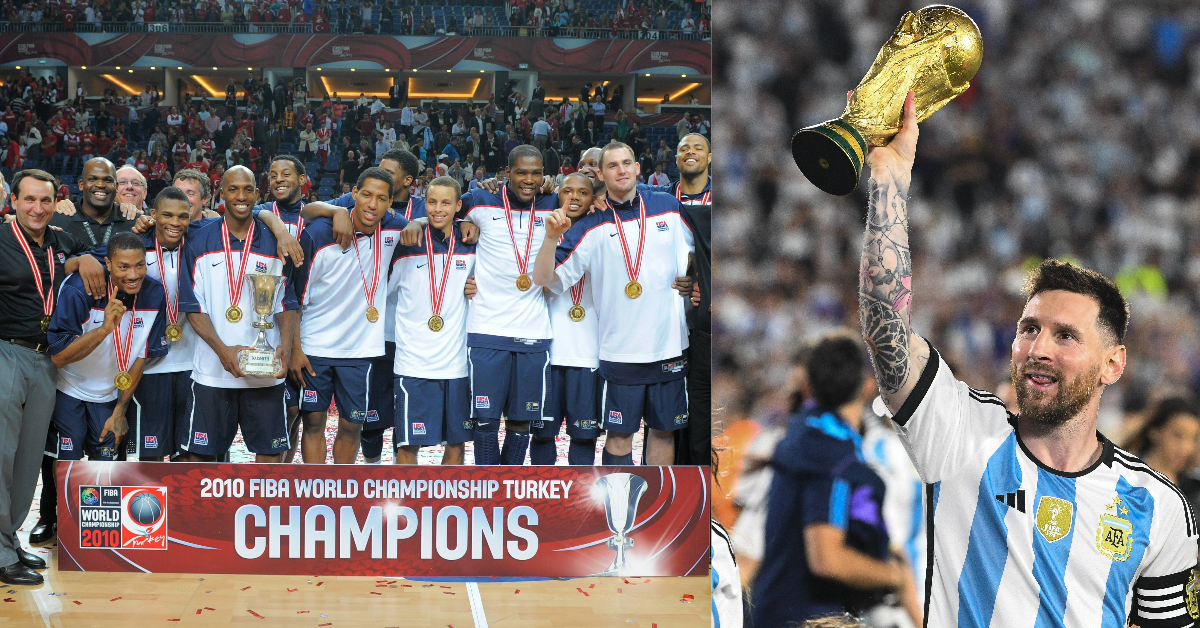
Imago
Image Courtesy: IMAGO

Imago
Image Courtesy: IMAGO
Basketball and soccer are two of the world’s most popular sports. The governing bodies, FIBA and FIFA, have always been in a friendly competition for viewership and revenue. Both organizations have a rich history and a global fanbase. But when it comes to financial success, there’s a clear disparity.
Watch What’s Trending Now!
The FIBA World Cup 2023 is in full swing from today and this year’s edition will see more viewership than the last edition.
ADVERTISEMENT
The popularity of FIBA has broken a record
FIBA celebrated a significant milestone with the tournament reaching over three billion people on television coverage in the 2019 edition.

Imago
2014 FIBA Basketball World Cup. USA vs SRB. Final.
This record-breaking viewership shows the global appeal of the tournament and its growing popularity. Over 70 broadcast partners delivered coverage in 190 territories, resulting in an 80% increase in average TV audience compared to the last World Cup.
ADVERTISEMENT
Top Stories
A’ja Wilson, Bam Adebayo Issue Strong Statement Against Rachel Nichols’ Question About Couple’s Privacy

Caitlin Clark Surpasses LeBron James, Stephen Curry With 136,000 PSA Announcement

Who Is Steven Adams’ Girlfriend Kayla? Everything to Know About Rockets’ 6’11 Star’s Romance Life

NBA World Turns On Victor Wembanyama After Subtle Dig at Shai Gilgeous-Alexander, OKC

Respect Pours In for Shaquille O’Neal, Charles Barkley After $200,000 Announcement

However, despite this impressive reach, FIBA’s revenue falls significantly short when compared to FIFA’s.
ADVERTISEMENT
A financial gap in FIBA
According to recent reports, FIBA’s revenue stands at $368 million, while FIFA generated a whopping $1.115 billion in 2022. This leaves a staggering gap of $747.1 million between the two federations. It’s intriguing to see such a substantial financial disparity despite FIBA’s impressive viewership numbers.
This difference can be attributed to several factors. FIFA’s primary source of revenue comes from the sale of television broadcasting rights, marketing rights related to the FIFA World Cup, licensing rights, and ticket sales. In 2022 alone, FIFA earned close to $5.77 billion, setting a record for the organization.
ADVERTISEMENT

Imago
Siegerehrung: FIFA Praesident Gianni INFANTINO, Emir Tamim bin Hamad Al Thani und Lionel MESSI ARG kuesst Pokal, Cup,Trophaee im Umhang,Bischt. Spiel 64,FINALE Argentinien – Frankreich 4-2 n.E. 3-3 am 18.12.2022, Lusail Stadium Fussball Weltmeisterschaft 20122 in Katar vom 20.11. – 18.12.2022 *** Award ceremony FIFA President Gianni INFANTINO, Emir Tamim bin Hamad Al Thani and Lionel MESSI ARG kuesst trophy, Cup,trophaee in cape,Bischt game 64,FINALE Argentina France 4 2 n E 3 3 on 18 12 2022, Lusail Stadium Football World Cup 20122 in Qatar from 20 11 18 12 2022
FIFA’s sponsorship deals are worth billions of dollars, while FIBA’s sponsorship deals are worth a fraction of that. FIFA has a more efficient marketing operation. The organization is better at marketing its events and generating revenue from them. FIBA, on the other hand, has been criticized for lacking in marketing efforts despite its popularity.
Watch This Story: Ranking Kobe Bryant’s Five Championship Runs With the Los Angeles Lakers
ADVERTISEMENT
On the other hand, FIBA’s revenue sources are not as diversified or lucrative. They’ve made strides in increasing their global reach and popularity. But their financial growth has not kept pace with their viewership success. The comparison demonstrates that mere viewership doesn’t always translate into financial success.
ADVERTISEMENT
ADVERTISEMENT
ADVERTISEMENT

